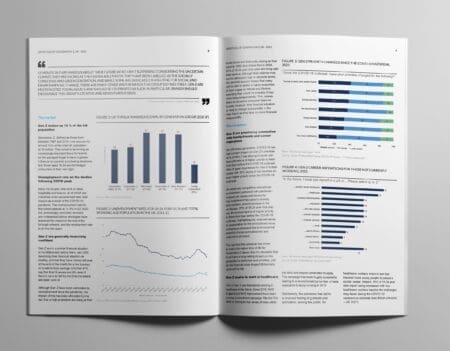China replaces US as World’s largest ice cream market
As the US gets set to celebrate national ice cream day this Sunday, new research from Mintel reveals a shift in power in the global ice cream market, with China overtaking US as the world’s biggest ice cream market in 2014 for the first time.
Between 2008 and 2014, the total market value for ice cream sales in China has nearly doubled, soaring by 90% to reach a spectacular $11.4 billion. Meanwhile, the US market has grown at a much slower rate, climbing by 15% over the same period to reach $11.2 billion.
Overall, global sales of ice cream reached $50 billion for the first time in 2014
Accounting for an impressive third of all ice cream products sold in 2014, volume sales of ice cream in China reached 5.9 billion litres in 2014, compared to 2.7 billion litres in the US. What is more, in 2015 volume sales in China are set to increase even further to reach 6.3 billion litres, while in the US sales are expected to remain at 2.7 billion litres. Despite this, value sales across both markets are predicted to see increases to $12.6 billion in China and $11.4 billion in the US in 2015.
While sales of ice cream in China continue to soar, US consumers eat considerably more ice cream than consumers in China – 8.5 litres per person per year, compared with just 4 litres for China. The top five ice cream markets by volume globally are China (5.9 billion litres), followed by the US (2.7 billion litres), Japan (784 million litres), Russia (668 million litres) and Germany (545 million litres). Meanwhile, volume consumption in the UK amounted to 345 million litres in 2014. On average, Brits ate five litres of ice cream per person in 2014, which is positively diet-friendly compared with the 8.5 litres per person Americans ate and 9.9 litres per person the Australians consumed.
Overall, global sales of ice cream reached $50 billion for the first time in 2014, increasing by 9% on 2011 when sales were valued at $46 billion.
Alex Beckett, Global Food Analyst at Mintel, said:
“Rising incomes and an increasingly developed retail infrastructure and cold chain network are driving growth in the ice cream market in China. However, the vast array of locally produced, low-price brands present a challenge for global ice cream giants looking to develop there. China is now the powerhouse of the global ice cream market in terms of overall size, although for per capita consumption, it’s the Americans who tuck into the most ice cream each year. The pace of development, coupled with the immensity of the population, is having an increasing impact on the Chinese ice cream market.”
“But while rising global volumes of ice cream mainly reflect the category’s expansion in emerging regions, ice cream has encountered challenging conditions in more developed markets like Europe and North America. Growth has been dampened by consumer diet concerns, competition from other categories, such as yogurt, and the perennial challenge of unseasonable weather. As the world economy’s centre of gravity continues to shift away from the West, these challenges give ice cream giants all the more reason to extend their presence – and new product development investment – in more emerging economies, particularly in Asia.” Alex continues.
Ice cream makers tailor better-for-you NPD to suit local markets
It seems that ice cream manufacturers are responding to the obesity challenge by improving the better-for-you (BFY) credentials of recipes. Indeed, according to Mintel’s Global New Products Database (GNPD), the global ice cream market witnessed a record high share of new launches bearing low/no/reduced (LNR) allergen and fat claims, as well as gluten-free products, in 2014. The number of ice cream launches with LNR allergen claims rose from 7% of global ice cream launches in 2012 to a healthy 15% in 2014, while LNR fat claim launches rose from 6% in 2012 to 8% in 2014. There has also been an increase in gluten-free claims, which rose from 6% of global ice cream launches in 2012 to 13% in 2014. Across the globe, the US leads the way with these claims, accounting for 20% of all LNR fat claims globally, as well as 18% of LNR allergen claims and 18% of gluten-free claims.
Frozen yogurt revolution hits Europe
Meanwhile, Mintel’s research confirms that the frozen yogurt revolution has well and truly hit Europe, contributing to the global increase in low-fat ice cream innovation. According to Mintel’s GNPD, the region accounted for 41% of frozen yogurt NPD in 2013 and rose to an impressive 54% of global frozen yogurt NPD in 2014, which was followed by 29% in North America and 9% in Asia Pacific.
“Having enjoyed huge success in the US, Greek frozen yogurt’s high protein content is resonating among European consumers, although people are also waking up to its often high sugar content too,” adds Alex.
Increased appetite for artisanal ice creams
There is a growing global appreciation of individuality and quality-over-quantity appeal in ice cream. In the US, for example, over six in 10 (61%) consumers of frozen treats claim to be willing to spend more on better-quality frozen treats, while 60% of daily eaters believe that local brands are better quality than national brands. Across Europe, there is strong interest in buying ice cream with locally sourced ingredients. In 2014, almost four in 10 ice cream and yogurt consumers in Italy (39%), France (38%) and Poland (38%) agreed that they would be interested in buying ice cream containing locally sourced ingredients. This was followed by a third (33%) in Germany and almost three in ten (28%) in Spain. In addition, 39% of UK consumers agree that ice cream made using authentic production methods, such as handmade or slow churned, appeals – rising to half (51%) of over 65s.
“Handcrafted ice cream, made with a homemade style authenticity, is well positioned to embrace the wider consumer interest in artisan-produced food and drink. Craft has become something of a buzzword in recent years, with everything from alcohol to pasta sauces, pizza and lemonade emphasising their craftsmanship or origin stories on packaging to differentiate the brand from the competition.” Alex concludes.
For the latest in consumer and industry news, top trends and market perspectives, stay tuned to Mintel News featuring commentary from Mintel’s team of global category analysts.
-
Mintel StoreGet smart fast with our exclusive market research reports, delivering the latest data, innovation, trends and strategic recommendations....View reports
-
Mintel LeapMintel Leap is a revolutionary new AI-powered platform that will transform your research process....Book a demo







































